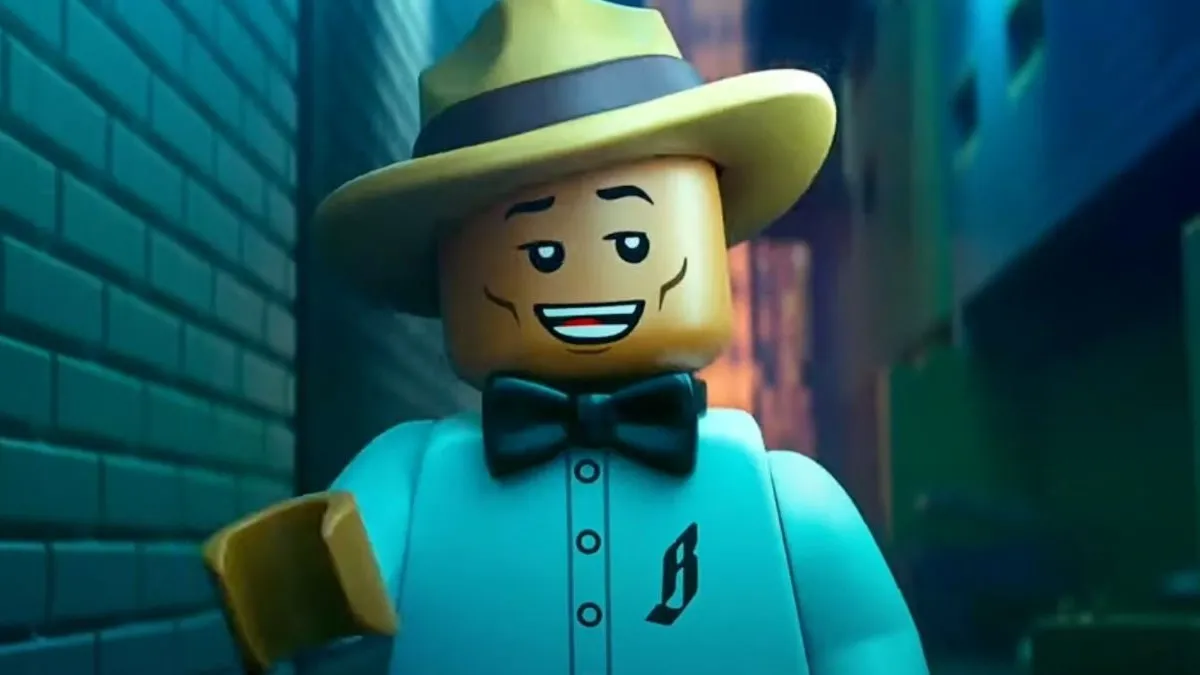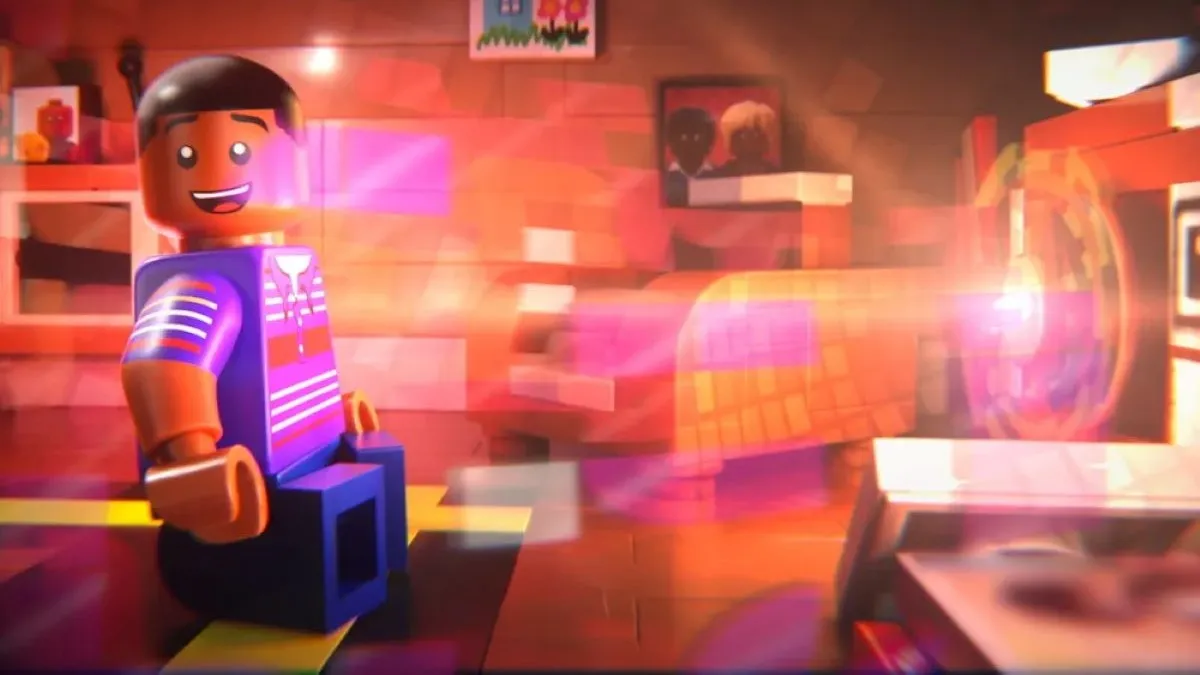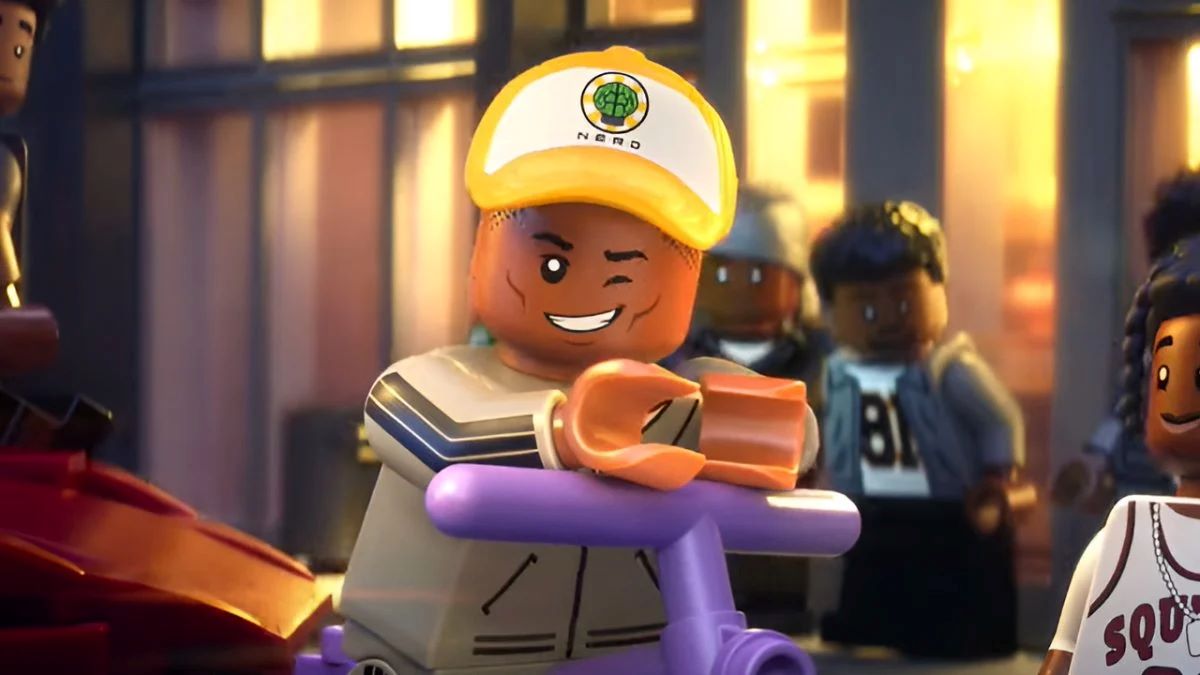Piece by Piece is a documentary that tells the story of decorated music producer/artist Pharrell Williams, from his beginnings in his home city of Virginia Beach all the way up to his 2019 Something in the Water festival. As friends, family, collaborators, and other such loved ones chime in with their own anecdotes to supplement those of Pharrell himself, his history is brought to life entirely with Lego pieces, complete with minifigures standing in as the interviewees, and set pieces that aim to communicate Pharrell’s experience of the world.
It might seem crazy what I’m ’bout to say, but Piece by Piece, if spoken about with the most humility-rich honesty one can muster, is one of the most profoundly special films of the year.
One might call hyperbole on such a statement, especially considering that Pharrell Williams‘ documenting his life and career with a fully-animated Lego film is a sensationally out-of-left-field creative choice, albeit one whose novelty is not easily sneered at. That is, it’s quirky and unprecedented enough that it calculates to a grand slam, because what boundaries can you even measure Piece by Piece by?
Except, it wasn’t out-of-left-field at all, and if there were any calculations, they’re personally esoteric to the point where they can’t even be called as such. Piece by Piece isn’t quite a documentary, nor does it play by the rules of narrative. It doesn’t tell the whole story, and yet leaves everything out on the floor, and in the sky. It’s optimistic to a fault, and yet convincingly forsakes the notion of such a fault. In this way and so many more, Piece by Piece is a grand slam because it’s Pharrell.

In case it’s not clear at this point, the worst way one could characterize Piece by Piece‘s Lego approach, is as a gimmick. It does, unfortunately, leave itself open to such a label; by presenting one’s life story in this way, you’re committing to a vibe that doesn’t readily accommodate the messiness of the human plight, and instead prefers to keep things idealistic and upbeat.
Because of this, some may accuse Piece by Piece of using its aesthetic to distract from the deafening blind spot surrounding the disbanding of the Neptunes, or to generally keep Pharrell’s story as clean as possible. What this accusation fails to account for, however, is what Piece by Piece actually is; not a documentary, but an organic extension of Pharrell himself.
Right from the beginning, the mission statement is clear; a very young Pharrell looks up at the sky as jets pass over his lovingly-described neighborhood. As the other minifigures grumble at the disruption, Pharrell stares up with wonder. After that moment, you would never again be able to convince him that life wasn’t amazing, and it’s apparent from the way he speaks now that he understands the role he plays in that.
Indeed, as we jump from his early days in Future Records, to meeting his eventual wife Helen Lasichanh, all the way to his more dissonant mainstream ventures, the miraculous consistency of Pharrell is the simple fact of how he decorates the world. We’re never given a breakdown of his creative process, because we’re watching it in real time. As the animated frame paints Pharrell’s surroundings with the blocky colors inherent to his mind’s eye, we realize that Pharrell’s isn’t a story that can be explained so much as innately known.
The Lego aesthetic, then, becomes a necessity for what Pharrell is trying to communicate with his story; what better way to encourage our individual potential to see and interact with the world, than by presenting it with the color and whimsy and creativity that’s so foundational to Lego?

Going back to the point about the Neptunes, then, let’s imagine if Pharrell did decide to let us know why the Neptunes disbanded. He confirmed elsewhere that he’s no longer on speaking terms with Chad Hugo, his then-collaborator on the outfit, so why not tell that story here?
Well, consider that Piece by Piece isn’t interested in traditional notions of truth, but in accessing a much, much deeper truth using Pharrell’s own emotional core as the muse, and Lego pieces as the materials. Piece by Piece does its darnedest to construct Pharrell’s inner life experience, and encourages us to think about what we ourselves are putting into the world — what would it gain from delving into the interpersonal drama and possible dirty laundry of Pharrell and Hugo, who were once artistically joined at the hip, and meant a lot to each other?
This isn’t a film about a celebrity or a “person of interest,” but about an artist and a human (so, by extension, all humans); call it removed or mythologizing, but judging by how Pharrell talks about his experiences, it should be apparent that everything here — from the Lego, to what was shown, to what was not shown — is closer to the actual truth of Pharrell as an expression of the universe, than if it was live-action and tell-all-coded.
I’ve held off talking about the film’s animation, and its soundtrack, including five brand new tracks by Pharrell written specially for Piece by Piece. What is there to say, other than how unsurprisingly, yet extraordinarily joyous both of those components are, to say nothing of how they work together?
Well, one can say, simply, that it’s Pharrell; the words that Pharrell puts to his life are merely there to add some semblance of populist recognizability to the way he floats around this planet, grasps at sounds and colors, and finds another zero to turn into a one. Everything else — that is, the music, the visuals, and the sheer creativity of it all — are extensions of Pharrell in this portrait of hope that is Piece by Piece; creativity that isn’t defined by its process, but by the fact that it simply is, and can.
Indeed, by what boundaries can one actionably critique Piece by Piece in such a way that’s conducive to what it so admirably wants to accomplish? How much of it is non-fiction? How much of it is fiction? What vacuum can possibly be gerrymandered in order to accommodate the storytelling strengths of either of those mediums, all without making them contrast? Well, the first mistake there, dear reader, began at the word “boundaries.” Hence, Lego.











Published: Oct 11, 2024 06:54 pm